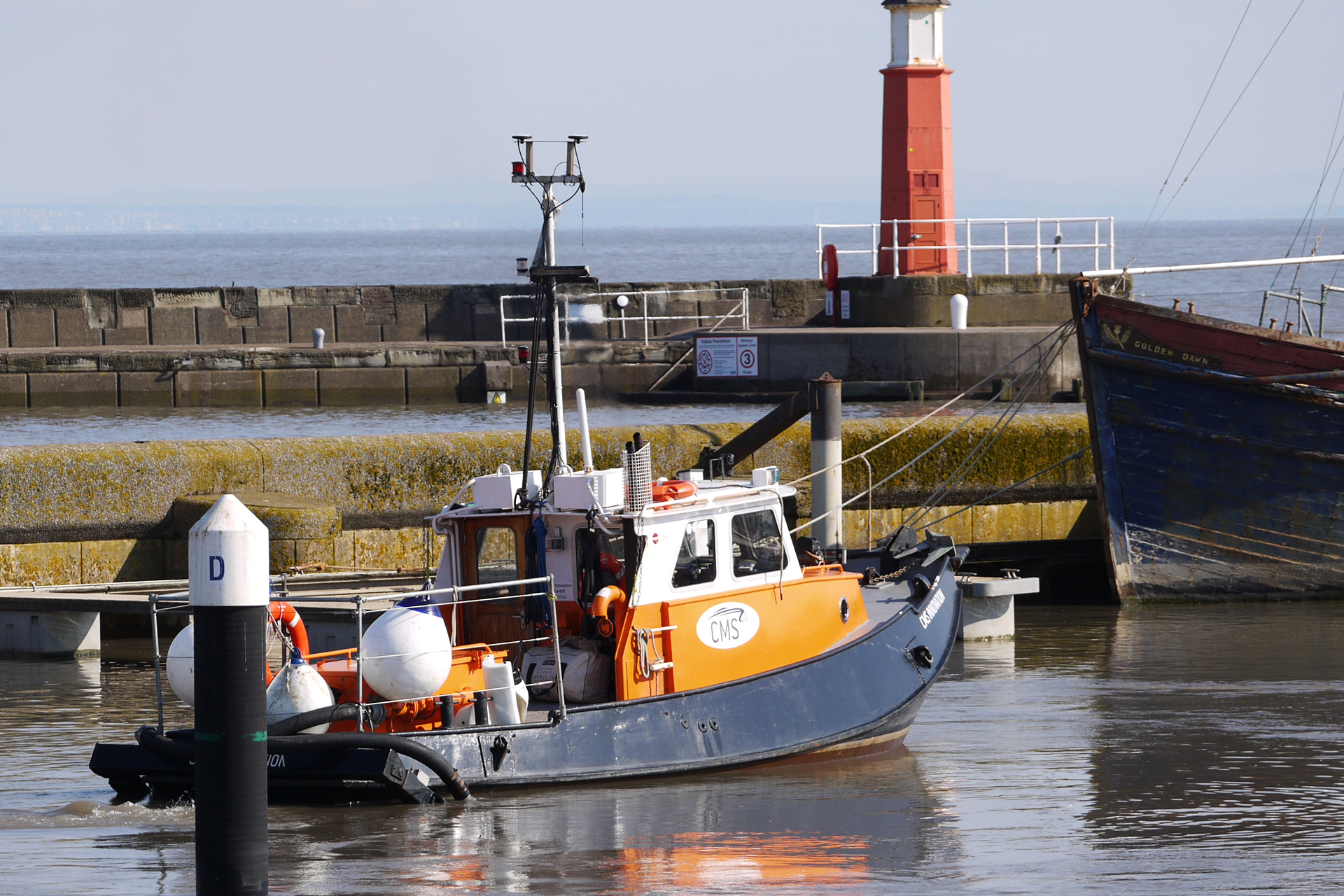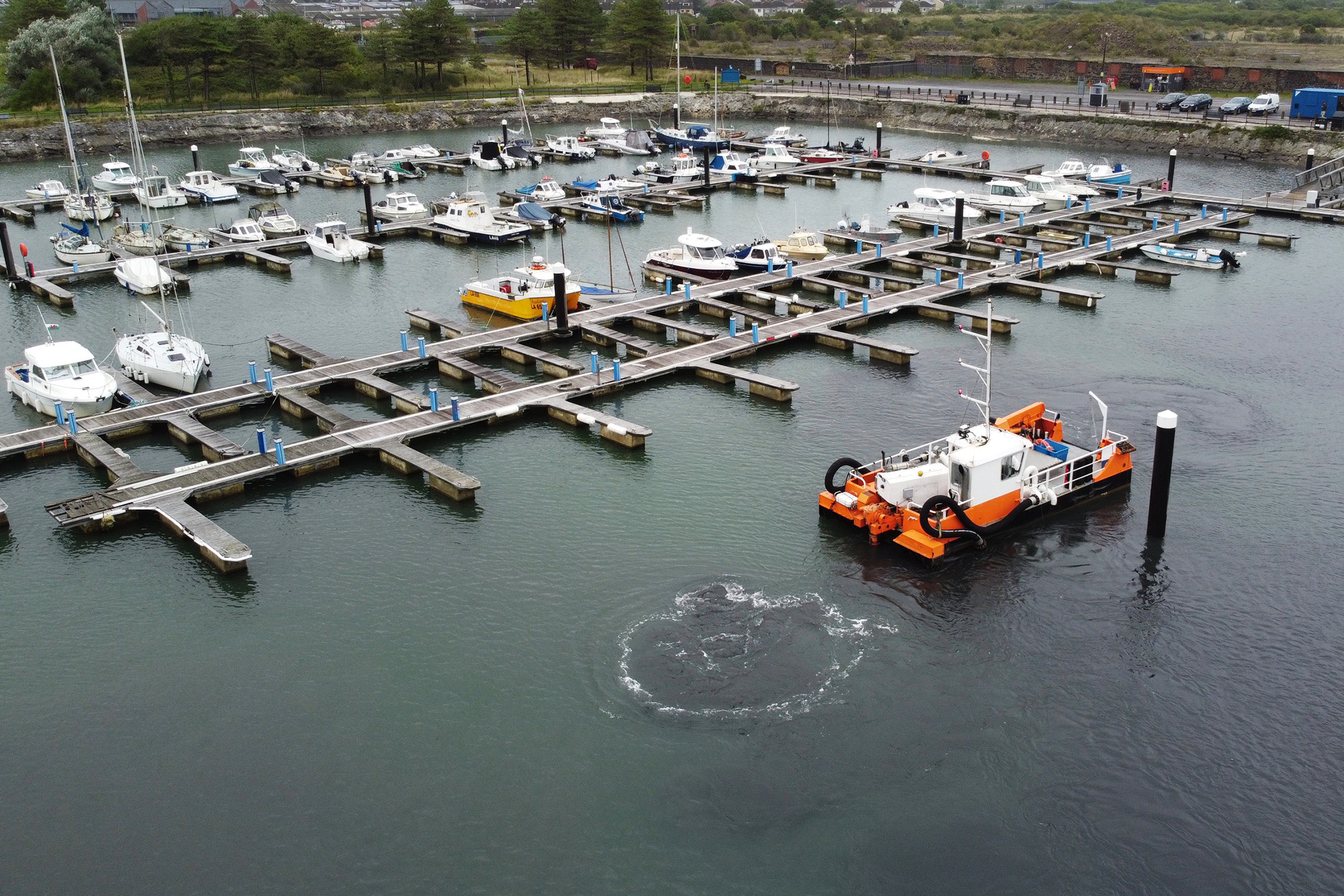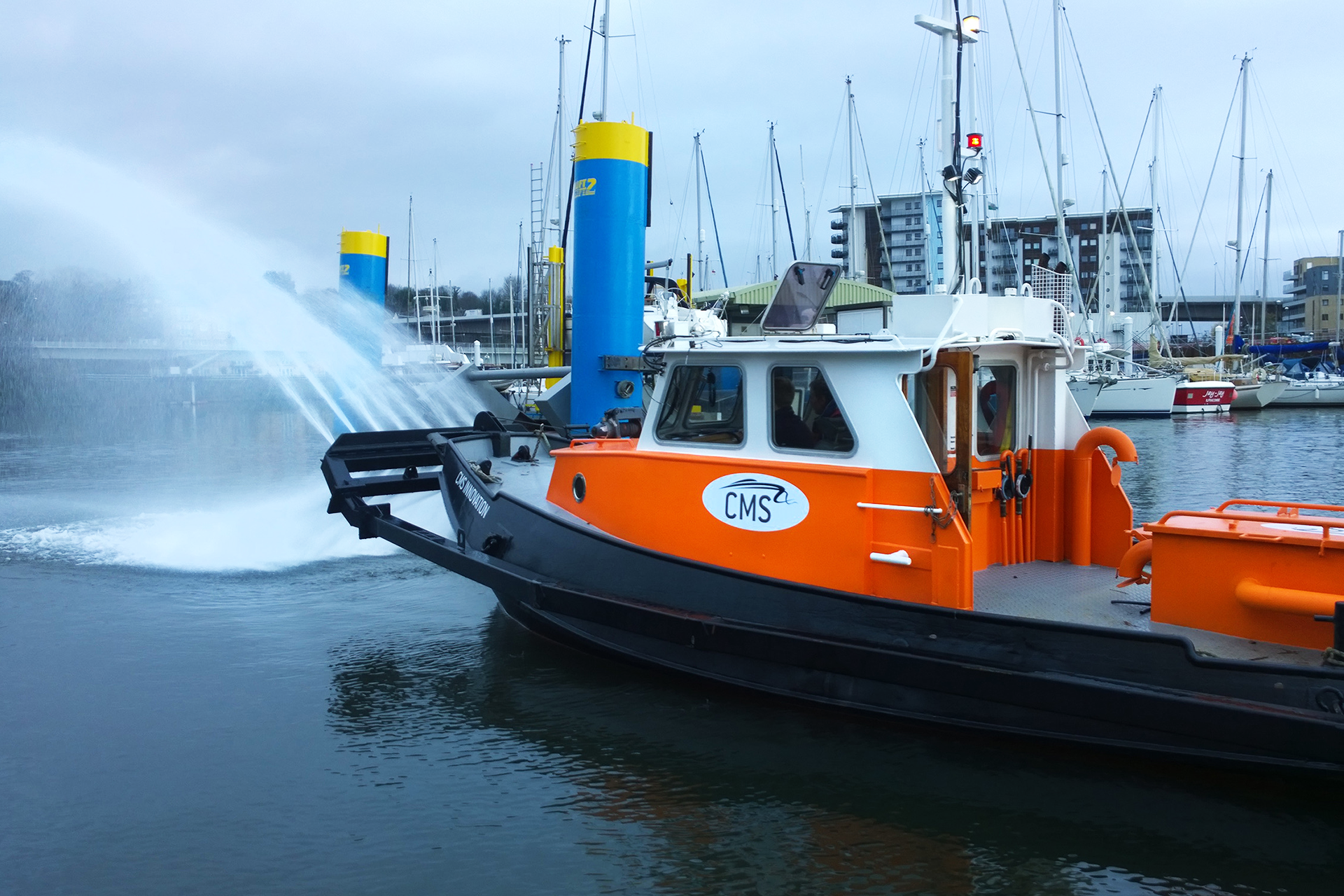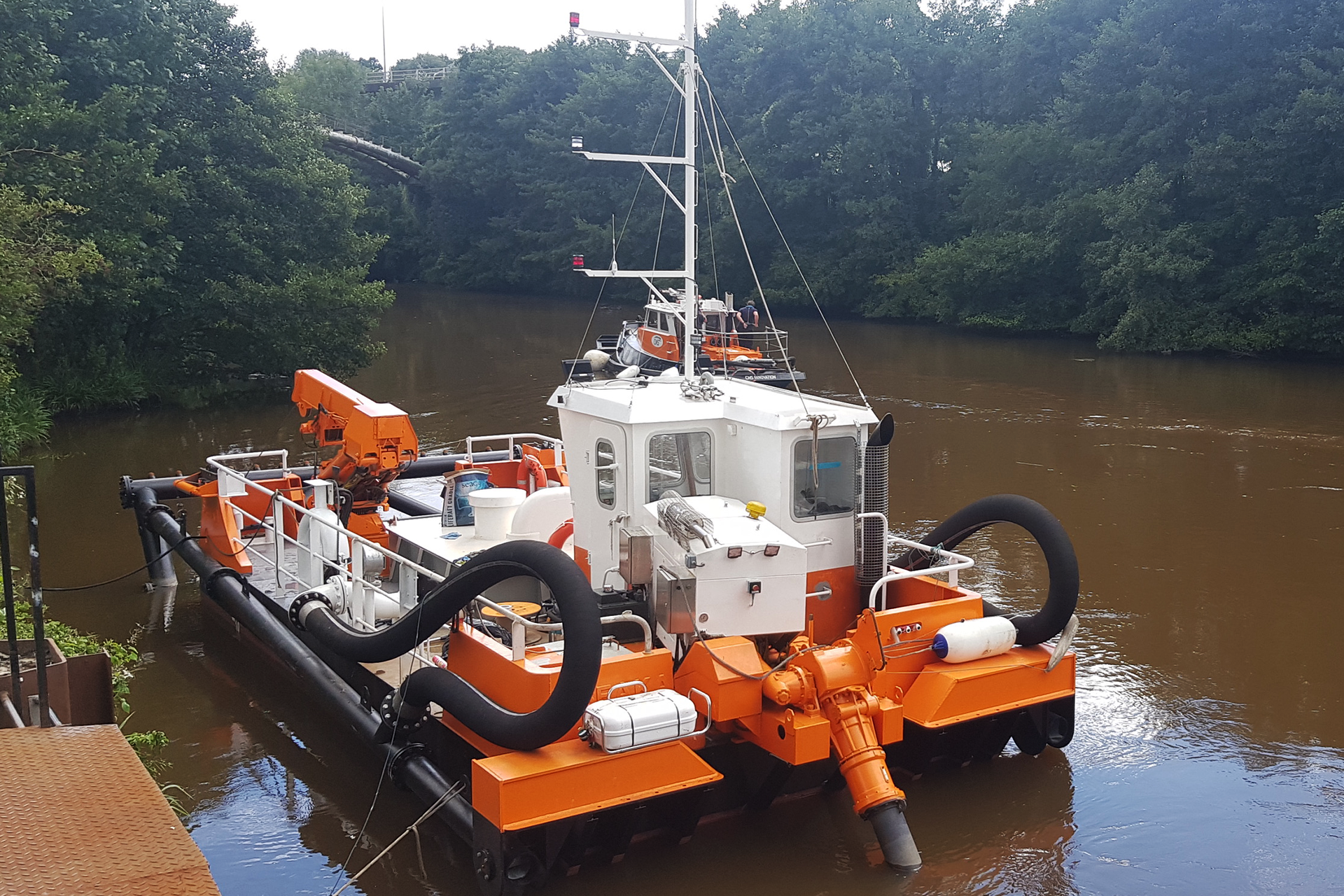Our fleet of water injection dredgers are able to work in a wide range of settings, including ports, harbours, navigation channels and marinas to remove siltation build up. Our experienced team are creative problem solvers who are able to finesse our dredging strategy to suite a wide variety of locations and situations.

About Water Injection Dredging
Water injection dredging remobilises sediment using the action of natural currents. It uses water pumps connected to a series of nozzles on a horizontal jet bar. The nozzles inject large volumes of water at low pressure directly onto the sediment build up. This process fluidises the sediment build up, turning it into a density current which remains close to the water bed. The sediments are then picked up by this current and able to flow horizontally out of the area being dredged.
This process eliminates the need for traditional excavation dredging methods and the subsequent transportation of the dredged material. Nature takes care of the sediment transport, making water injection dredging a cost-effective dredging technique with less impact on the environment.
Benefits
- Cost effective method of dredging
- No disposal licence required
- Smaller vessels are fully road transportable
- Quick mobilisation/demobilisation times
- No need to move pontoons or infrastructure with our smaller vessels
- Shorter timeframes for carrying out work
- Great manoeuvrability
- Able to reach hard to reach areas close to embankments and quay walls
- Environmentally sound solution
- Creates a considerably lower CO2 footprint compared with conventional dredging


Uses of Water Injection Dredging
- Marinas
- Underneath jetties and moored vessels
- Alongside quay walls
- In locks
- Inland waterways/canals
- Culverts
- Access channels
- Flood prevention
- Increasing depths for ship berthing
- Wind farm installations
- Levelling the water bed for pipelines and tunnel sections
- Increasing the depth of pipelines and cables
Our Water Injection Dredging Fleet
Our fleet offer a broad range of deployment and use options
CMS Innovation
- Fully road transportable
- 11.5 tonnes in weight
- Quickly deployed with a crane or boat lift
- Length ~ 9.58 meters
- Width ~ 3.9 meters
- Draft ~ 1 meters
Click HERE for the full specification sheet
CMS Doonhamer
- Self contained with crew accommodation on board
- 5 tonne winch
- Anchor winch
- Forward 13 tonne winch
- Weight ~ 55 tonnes
- Length ~ 14.6 meters
- Beam ~ 5.5 meters
- Draft ~ 1.6 meters
Click HERE for the full specification sheet

Environmental Impact
The process of transporting dredged material horizontally along the water bed, compared to traditional dredging techniques, results in the following specific circumstances which reduces the impact of the process on the environment:
- An increased quantity of sediment goes into the lower layers of the water column
- The rate of sediment input in the natural systems at the dredged area is increased
- The sediment is transported by natural phenomena to the final destination through the density current
- The rate of sedimentation in the deposition areas may vary if the natural conditions vary
- Dredged sediments remain within the ecosystem
Special attention should always be given to areas nearby the dredging location to determine if there are sensitive habitats such as shellfish beds or spawning habitats. In addition, in most cases, if the soil is contaminated water injection dredging is not a suitable method. We can offer advice in organising environmental studies and the types of permissions that are likely to be required prior to dredging.


